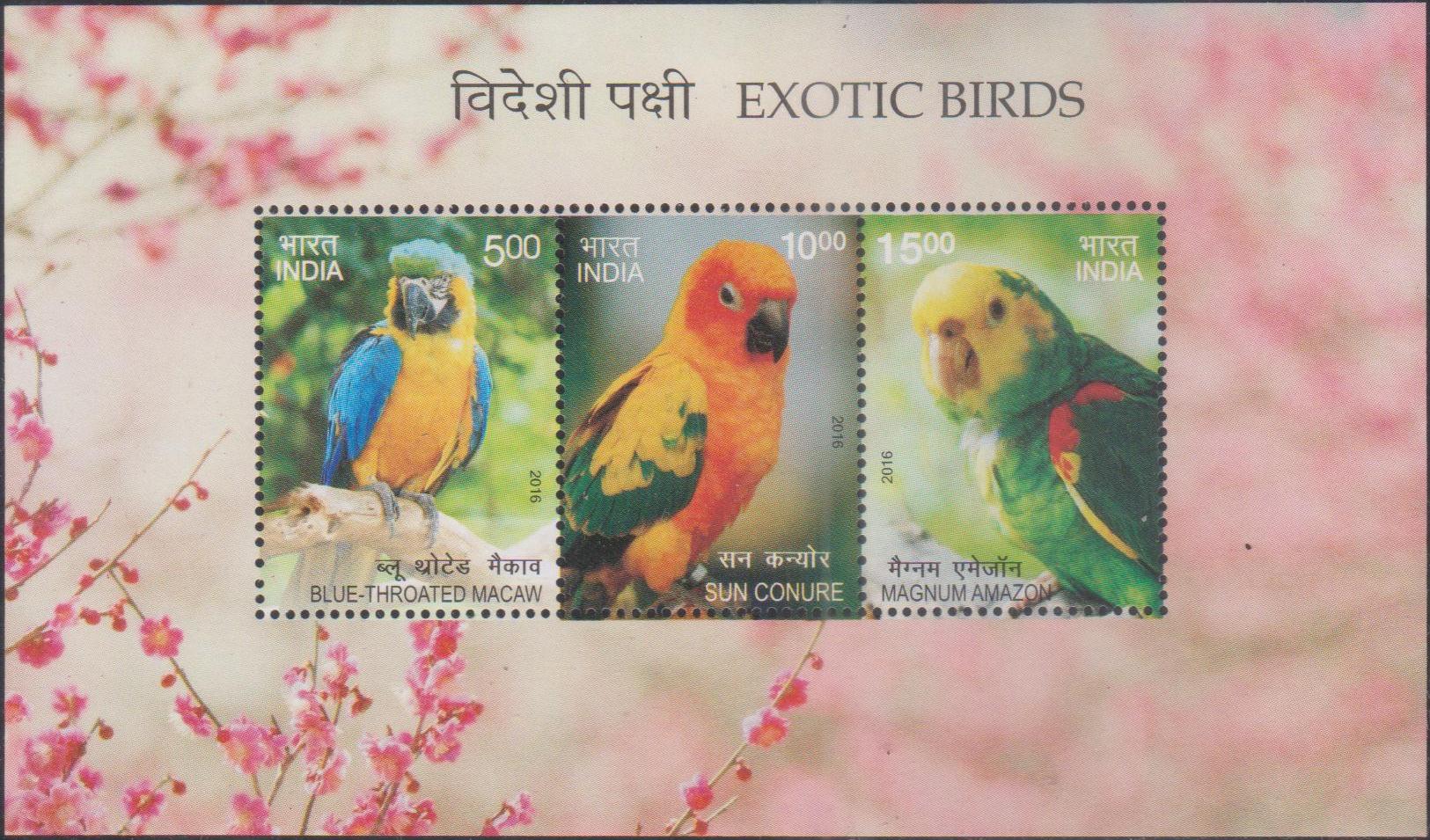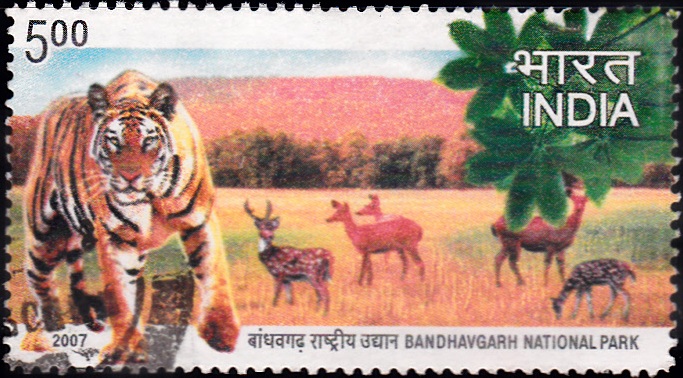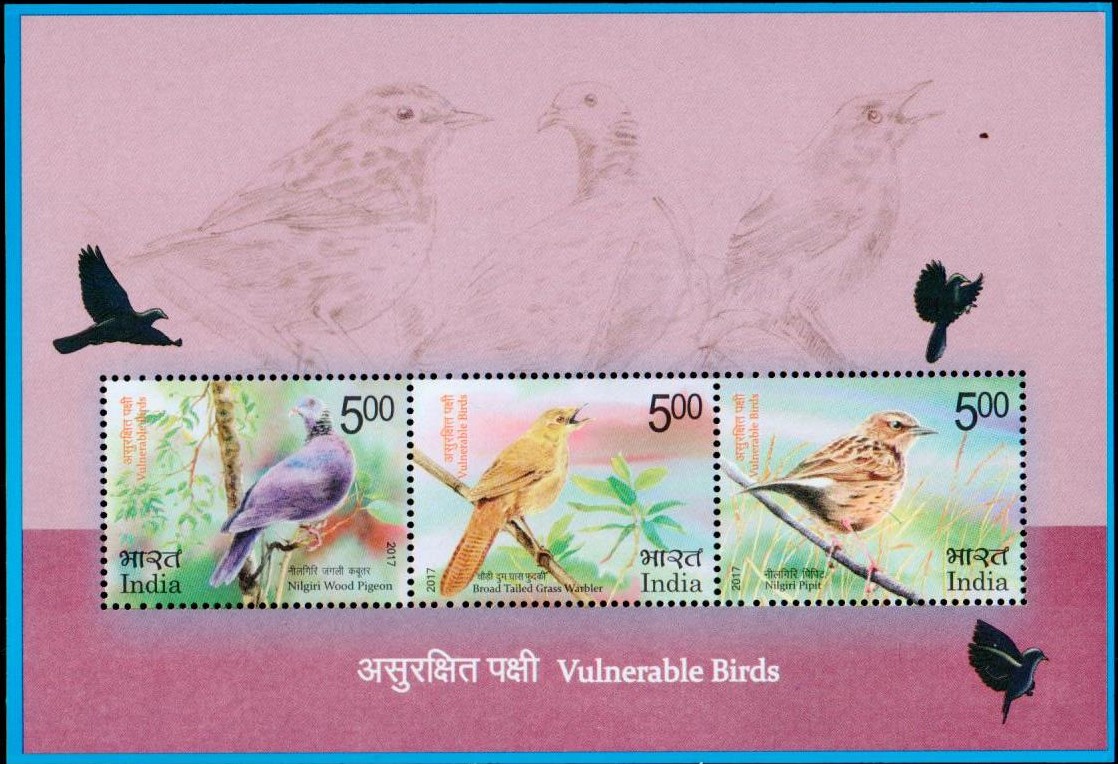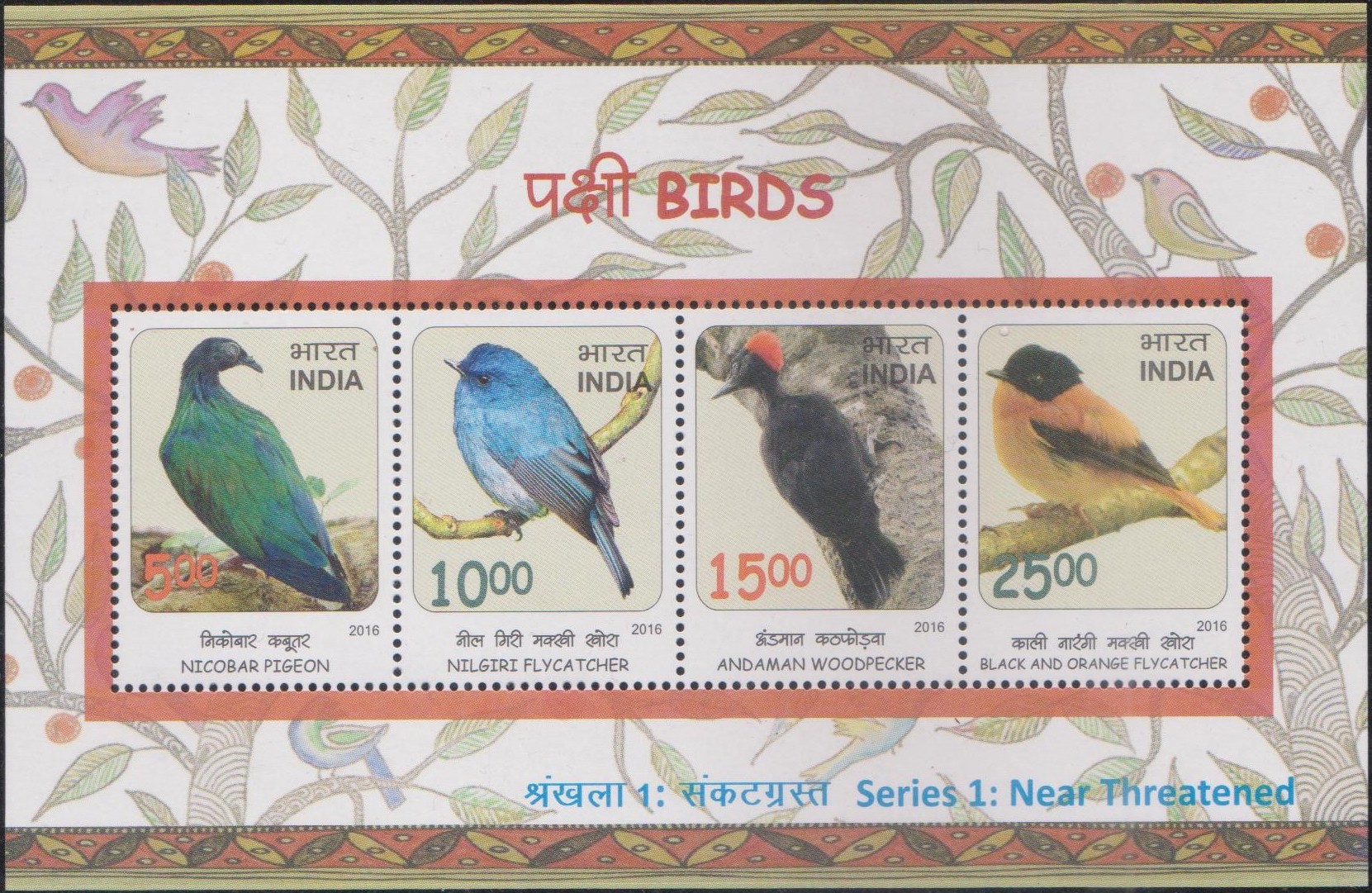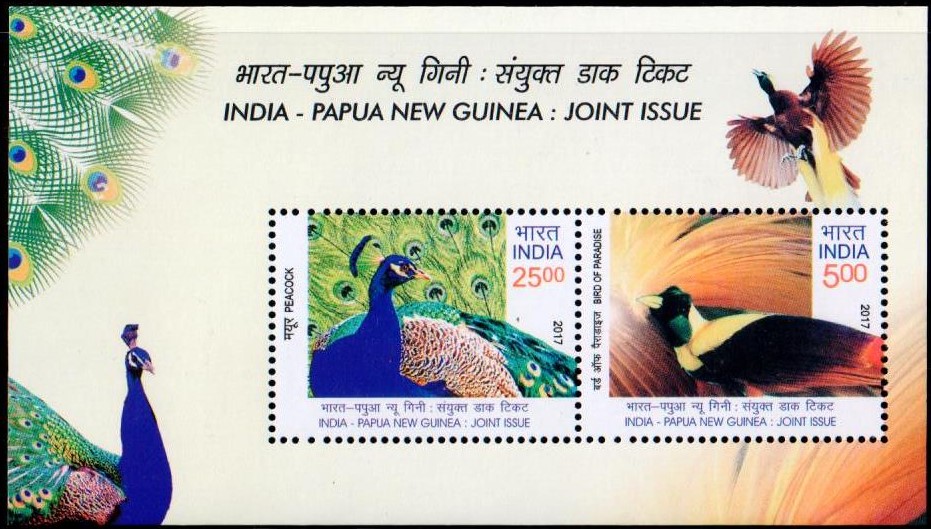
Endangered Birds of India 2006
A Miniature Sheet consisting of 4 nos. of postage stamp on the Endangered Birds of India : Manipur bush quail, Lesser florican, Greater adjutant and Nilgiri laughingthrush :




 Issued by India
Issued by India
Issued on Oct 5, 2006
Issued for : In bringing out a set of four commemorative stamps and maxim cards on endangered bird species, India Posts celebrates the unique beauty of each, while carrying forward the message of conservation.
Credits :
Stamp & FDC : Suresh Kumar
Cancellation : Alka Sharma
Type : Miniature Sheet, Mint Condition
Colour : Multicolour
Denomination : 500 Paise each
Stamps Printed : 3.0 Million each
Printing Process : Photogravure
Printer : India Security Press, Nashik
About :
- The earth sustains myriad forms of life, but not all forms have survived down the ages. Many animal species have become extinct, and many more are endangered.
- The greatest threat to animal life today is posed by the rapid shrinking of physical habitat, largely due to the pressures of human population growth around the world: while hunting and trapping have already depleted the numbers of many animal species, it is the large-scale transformation of landscapes, the levelling of forests, the filling up of swamps and marshes, and so on, which have left many creatures with literally no room to live or breathe in. Environmental pollution and chemical pollutants have also wrought havoc with the habitat, while pesticides and insecticides have contributed to the decimation of small animals while also affecting their ability to breed.
- The four species of endangered Indian birds featured are:–
- 1. Manipur Bush–Quail, “Perdicula manipurensis” :–
Inhabits stands of tall grassland and feeds in groups in the open, on grass seeds, wild lentils, and insects. Once endemic to the wet grasslands of north east India, there has been no confirmed sighting of the bird since 1935. - 2. Lesser Florican, “Sypheotides Indica” :–
A large bird of the bustard family and the only member of genus sypheotides. Inhabiting grasslands including standing fields of cotton and millets, the birds feed on grain, greenshoots, seeds, and beetles. - 3. Greater Adjutant Stork, “Leptoptilos dubius” :–
A large wading bird of the stork family Ciconiidae, the bird is found in the tropical wetlands of north and north-east of India. This is a huge bird, typically 145 to 150 cm tall with a 250 cm wingspan. The birds feed mainly on frogs, large insects, reptiles, lizards, and fish. - 4. Nilgiri Laughingthrush, “Garrulax Cachinnans” :–
Endemic to Nilgiri hills, this species feeds on insects and berries especially wild raspberry and hill guava. A noisy bird, its call is a spirited ‘laughing’, oft repeated. It breeds during February to July and makes a cup shaped nest of grass, rootlets, moss etc. in a bush or a small tree.
- 1. Manipur Bush–Quail, “Perdicula manipurensis” :–
- Text : Based on material provided by the Bombay Natural History Society.
Subscribe
Login
0 Comments


